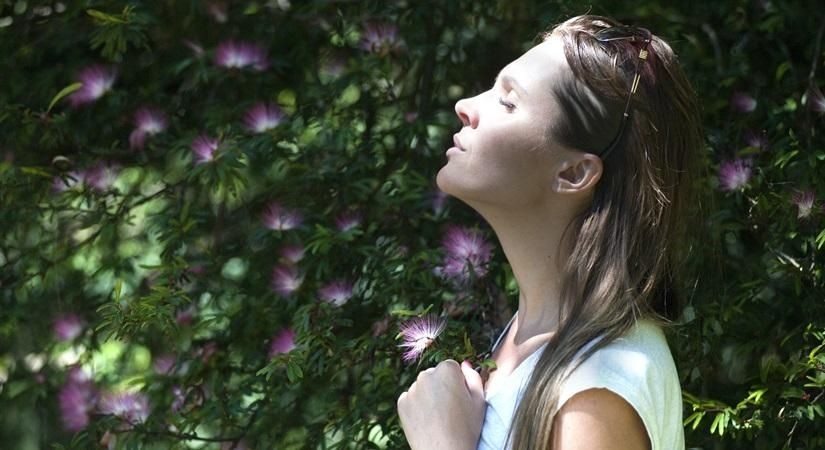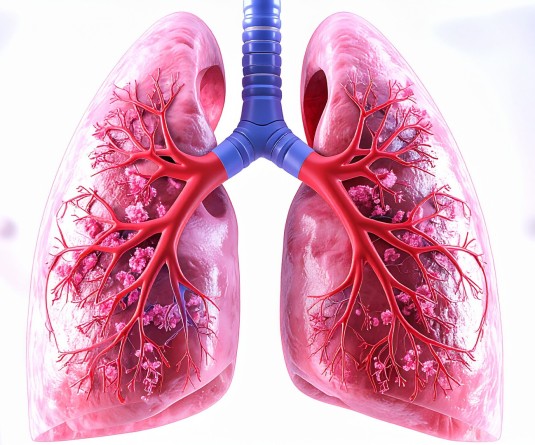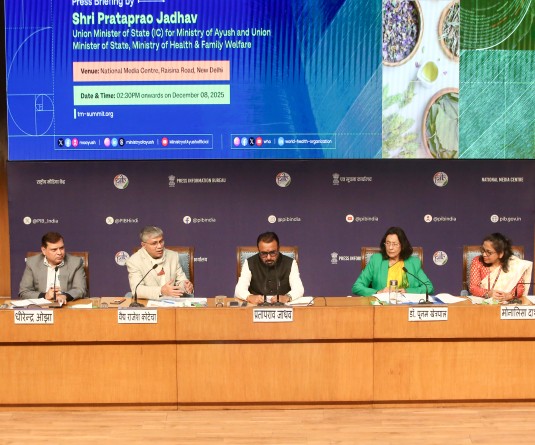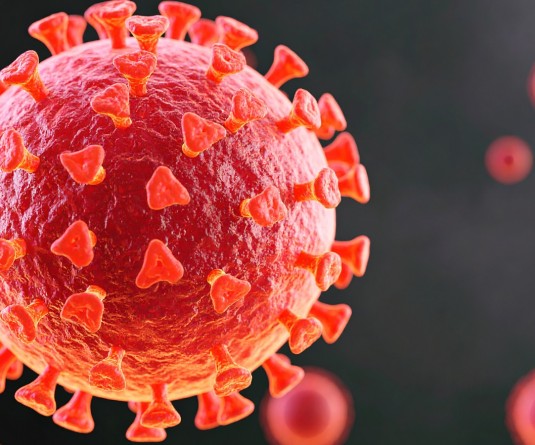(photo:IANSLIFE)

New Delhi, Februay 23 (IANSlife) Breathing is a fundamental and automatic process that sustains life. It's a process that happens without conscious effort, but with a little bit of intention, we can use it to benefit our overall health and well-being. Breathing is the bridge between mind and body, therefore it forms the cornerstone therapy of Mind Body Medicine, a pillar of Wellness at Kshemavana.
There are several different types of breathing techniques, each with its own unique benefits. In this article, we will explore some of the most popular and widely used breathing techniques and their benefits.
Breath control is described by the Sanskrit word pranayama. It's a technique that originated in ancient India and is widely practiced in yoga. Pranayama breathing involves controlled breathing, using specific patterns and rhythms to regulate the flow of air in and out of the body. Traditional yoga texts describe various pranayama techniques to regulate breathing. Dr. Narendra Shetty, Chief Wellness Officer of Kshemavana shares few pranayamas one can practice depending on specific needs.
Ujjayi/ Ocean's Breath
Ocean's Breath provides a quick way to help yourself get unstuck if you've been experiencing depression. Inhale through your mouth, pull in your chin so that your throat feels somewhat constricted and touches the chest, exhale while releasing the chin up, and then deliberately and mindfully inhale and exhale through your nose. At least five to ten times should be repeated.
Benefits:
It soothes the nervous system
Calms the mind and increases psychic sensitivity.
It relieves insomnia
Slows down the heart rate
Lowers blood pressure.
Although it is a calming pranayama, it also has a heating effect that encourages oxidation.
Shitali
You can use Shitali to calm yourself down when things become tense, whether emotionally or when the summer heat is at its peak. Roll your tongue in a straw-like motion. Exhale through your nose after holding the inhalation for a few seconds. Repeat.
Benefits:
Reduces excessive pitta.
Lowers body temperature and eliminates surplus heat.
Sparks the appetite and encourages healthy digestion.
Reduces excessive acidity in the gastrointestinal tract.
Relieves inflammatory skin disorders.
Assists in reducing inflammation all over the body.
Promotes mental tranquility by soothing and calming the mind.
Shitkari
You can cool down and calm your nerves by using the yogic breathing technique known as Shitkari. Roll your tongue backward where the tip of the tongue touches the inner edge of the upper palate. Breathe in through the sides of the rolled tongue and close your mouth. Exhale through your nose. Repeat.
Benefits:
Holistic Balance of the Mind and The Body.
It harmonizes the body's Pitta (Fire Element).
Enhances Mental Health
Removes Heat from the Outside.
Promotes healthy digestion.
Fevers Treatment and Potential Cure.
Reduces high blood pressure.
Detoxifies the entire bodily system and reduces toxins.
Brahmari
If you want to unwind and let go of tension in your body, try using the humming bee breath. Simple yoga breathing techniques include taking a deep breath in through your nose and exhaling with an audible humming sound. One can close your ears with the tip of your index finger as one makes a humming sound. Feel the vibration within.
Benefits:
Reduces stress.
Improves sleep quality.
Increases mindfulness.
Reduces high blood pressure.
Improves lung function.
Enhances cognitive function
Good for Substance abuse as it reduces cravings
Bastrika
To relieve tension and stress, practice Bastrika Pranayama. It also produces a great deal of heat, which can aid in calorie burning for your body. Inhale through your nose while seated in a Lotus position. Force your breath to leave your body through your belly as if it were a "bellows" when you exhale. Do this vigorously for ten breaths, then inhale deeply, hold the breath, and exhale slowly.
Benefits:
Benefits the respiratory and digestive systems.
Drains excess phlegm from the lungs.
Improves blood oxygenation, giving all tissues and organs a boost in vitality.
Strengthens and tones the area around the abdomen.
It soothes the mind.
Energizes the entire body and mind.
Alternate Nostril Breathing
Alternate Nostril Breathing is a type of pranayama breathing technique that involves breathing through each nostril alternatively. It's believed that this type of breathing helps balance the right and left hemispheres of the brain, resulting in a calm and centered state of mind.
Benefits:
Reduces stress and anxiety
Improves mental clarity and focus
Balances the nervous system
Increases energy and vitality
Diaphragmatic Breathing
Diaphragmatic breathing, also known as belly breathing, is a technique that focuses on deep breathing from the diaphragm, which is the muscle located at the bottom of the ribcage. In diaphragmatic breathing, the diaphragm expands and contracts, causing the lungs to fill with air, resulting in deep, slow breaths.
Benefits:
Reduces stress and anxiety
Improves sleep quality
Enhances respiratory and cardiovascular health
Boosts the immune system
Slow Breathing
Slow breathing is a technique that involves taking slow, deep breaths in through the nose and out through the mouth. It is a quick and easy method that can be used at any time and anywhere.
Benefits:
Reduces stress and anxiety
Improves respiratory function
Lowers blood pressure
Enhances mental clarity and focus
Box Breathing
Box Breathing is a simple but effective breathing technique that involves taking four equal breaths, each with a specific count. The process involves inhaling for four counts, holding the breath for four counts, exhaling for four counts, and holding the breath again for four counts. This process is repeated several times to achieve the desired level of relaxation.
Benefits:
Reduces stress and anxiety
Improves sleep quality
Enhances respiratory and cardiovascular health
Increases mental clarity and focus
4-7-8 Breathing
The 4-7-8 breathing technique is a simple and effective technique that involves counting each inhale, hold, and exhale. The process involves inhaling for four counts, holding the breath for seven counts, and exhaling for eight counts. This process is repeated several times to achieve the desired level of relaxation.
Benefits:
Reduces stress and anxiety
Improves sleep quality
Enhances respiratory and cardiovascular health
Increases mental clarity and focus
Animal Breathing
Bunny Breathing: To increase the amount of oxygen getting to your brain, take several briefs, and rapid breaths.
Bumble Bee Breathing: Slow breaths and buzzing can help reduce your heart rate and stress level.
Lion Breathing: To let out frustration and rage, take long, deep breaths and roar.
Bear Breathing: To induce a state of tranquility and restfulness, concentrate on holding your breath.
Crocodile Breathing: Deep belly breathing can be achieved by using yoga asanas like Makarasana.
Mindful breathing
If you suffer from anxiety, stress, insomnia, or high blood pressure, you might want to try mindful breathing. In order to use this technique effectively, one must fully focus their attention on their breathing. There are many different types of mindful breathing. One straightforward technique is to simply pay attention to your breath's natural rhythm, without attempting to alter it. The breathing may naturally slow down as a result of this.
To perform mindful breathing, a person should:
find a quiet place without distractions
choose a comfortable position, ideally sitting or lying down
focus on breathing by feeling and listening to the body inhale and exhale.
Be able to let thoughts go through your mind without passing judgment.
Alternatives
Breathing techniques should never replace medical treatment. With other therapies, these exercises function best. Exercise to improve breathing may be a component of pulmonary rehabilitation for lung conditions. Exercise, physical therapy, and health information may also be a part of the treatment.
Each person will experience stress and anxiety differently. Therapy, drugs, and mindfulness practices are all potential treatment options. In stressful circumstances or to establish a regular sleep schedule, breathing exercises may help reduce stress.
Numerous medical conditions, especially stress, and anxiety, can be helped by breathing exercises. When they are a regular part of your schedule, they work best.
When people are relaxed and breathing normally, they can experiment with breathing techniques for the first time. They might benefit from practicing at the same time each day. It may take some practice to become accustomed to a breathing exercise.






